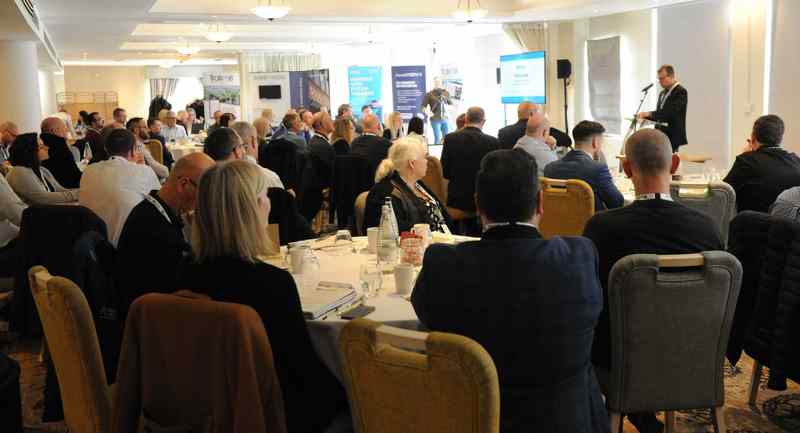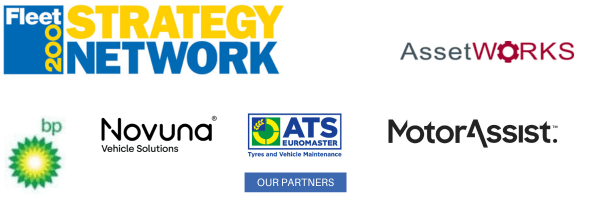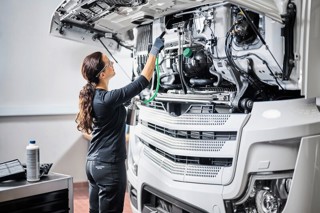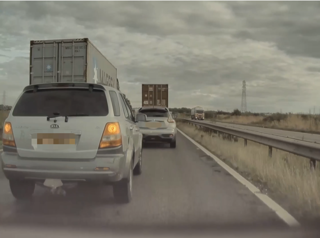
How risk management strategies can help fleets to tackle the rising cost of insurance claims and premiums.
Three fleets of varying sizes put forward their policies before an open conversation brought out further recommendations at the February Fleet 200 Strategy Network meeting in Sheffield.
Here are a summary of the comments made in the roundtable.

How risk management strategies can help fleets to tackle the rising cost of insurance claims and premiums.
Three fleets of varying sizes put forward their policies before an open conversation brought out further recommendations at the February Fleet 200 Strategy Network meeting in Sheffield.
Here are a summary of the comments made in the roundtable.
Vehicle policy is to keep the fleet modern with the latest ADAS technology
- Risk assessments are carried out to identify high risk drivers
- New staff receive an induction when they start which includes fleet policies and driver training
- Next step is to digitise the claims process
- Front and rear dashcams for vans which have paid for themselves several times over by identifying fault and speeding up the claims process
- Use brokers to support the financial argument for new safety initiatives – put the pressure on the board by showing the return on investment
Views of an 1,100 car/van fleets with a transient workforce
- Annual recertification to receive the permit to drive
- The incident rate has fallen but the cost of each is getting higher due to the level of technology in the vehicles. Added to this is the increased cost of things being charged out, such as credit hire and personal injury. “Insurers and underwriters need to do more to clip the wings of the credit hire market.”
- Instant reporting of first notification of loss is important to get control before credit hire gets in the way. We need to minimise the involvement of third-party companies.
- Data shows that Friday crashes are twice as expensive as any other day of the week: potentially because people are rushing to get home, so we can link the data to their behaviour
Views of a sub 1,000-vehicle car/van fleet
- Authorisation times are slipping for repairs. We set a level for self-approval, e.g. £2,000 – below that, they can get on with the repair. That speeds things up and you can manage the process retrospectively by matching up the invoices.
- We insist on same-day notification, ideally within an hour. The only time where this is relaxed is if the incident results in a serious injury – otherwise we expect them to report from the roadside.
- We issue cards with step-by-steep instructions and the numbers to call. We also encourage them to put the numbers into their smartphone.
- With risk assessments, we encourage people to answer the questions honestly, not to try to cheat the system. We get them to understand that it’s in their interests and their safety – if they are honest, we can help them become better and safety drivers.
Open discussion thoughts
- If your car is off-road for 30 days and you give your staff a rental car, you have to declare it for tax. This has a big impact if the driver has swapped from an electric company car into a diesel rental car – that month could cost them more in tax than the entire year in the electric car. Parts shortages make this far more likely. For some items, such as wing mirrors, we put on a temporary mirror to keep the vehicle moving while we are waiting for the part to come in.
- You have to stay on top of the repairer to ensure they don’t just stick the car in the corner of the yard and prioritise other, more profitable jobs.
- Sometimes paying a higher labour rate can mean your vehicle is repaired more quickly which ultimately means it is cheaper for the business (reduced downtime, less rental), but it can be a battle with procurement to get them to understand this.
- A higher labour rate can mean: acceptance of the job; prioritisation of work; quicker repair; les hire costs. You can also meter your labour rate based on off-road times: pay ‘x’ for less than five days or ‘y’ for less than 10 days.
- Future developments (within the next decade) will see AI playing a role: by understanding the speed of the impact and the direction of travel, it will be able to predict the cost of the repair and the likelihood and type of injury.
- Fleets would like to see it mandated that insurers have to share information about vehicles that have been involved in an incident to speed up repairs.
- There are fears about bodyshop capacity as numbers continue to fall, especially for EV repairs as the electric vehicle parc rises. An EV takes 15-20% more space in the shop due to the need to power up/down and room to work.
- One fleet makes sure its preferred bodyshop knows about the number and type of EVs it operates, including its transition plans, so they can train their staff and invest in the infrastructure to meet the future capacity need.
Login to continue reading.
This article is premium content. To view, please register for free or sign in to read it.





















Login to comment
Comments
No comments have been made yet.